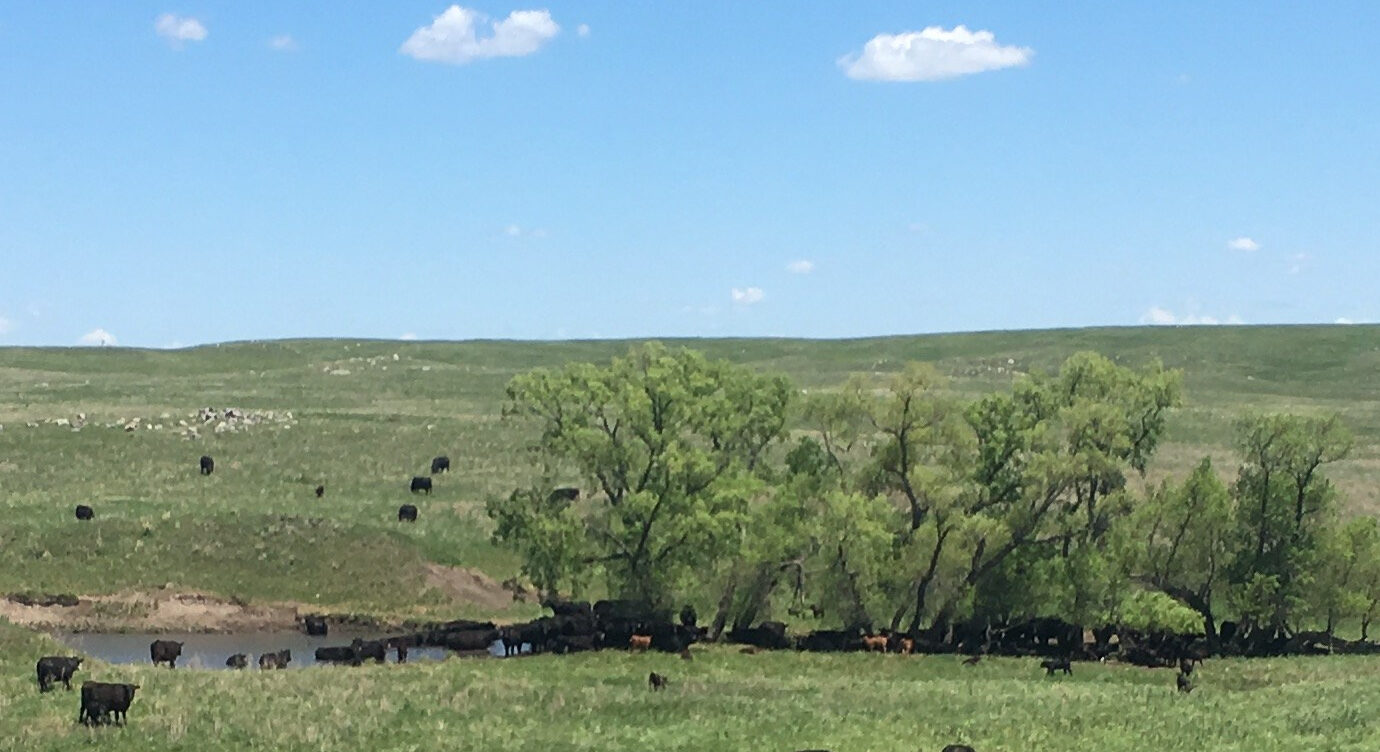
6 Nutritional Strategies to Alleviate Heat Stress in Beef Cattle
Summer has arrived, for livestock producers heat stress is something they face each year. Cattle not well equipped to handle heat stress and are usually grazing or in a feedlot during this time of year. Unlike swine and poultry who are housed in a more controlled indoor environment with fans and sprinklers to help keep them cool. Cattle sweat and pant to combat heat stress. However, they only sweat 10% as much as humans do and depend mainly on respiration to cool themselves in the hot summer months. As heat stress increases, feed intake levels decrease and thereby so does performance during those hot spells. Here are 6 ways producers can adjust their diet to help alleviate heat stress:
1.Replace low quality roughages and grains with high quality forages.
This may decrease the energy density of the diet which has been shown to alleviate so of the heat stress factor on the cattle. The heat increment of digestion is higher when consuming feeds high in fiber. Feeding high quality forages can reduce this extra feed source of heat. However, be cautious not to choose a forage without enough fiber as that will result in poor rumen health and potential acidosis or bloat. Look for a forage that is low in ADF and has at least 20% NDF.
2. Add buffers such as sodium bicarbonate to total mixed rations.
If you are going to continue feeding a mixed ration with grains, adding a buffer can reduce the incidence of acidosis. When feed intake has decreased, cattle will sort out the grain and consume little high fiber forage resulting in acidosis.
3. Increase the concentration of minerals and vitamins in the diet.
Three minerals that should specifically be increased as they are lost through perspiration are sodium, potassium, and magnesium. These electrolytes should be fed at a rate of 0.6%, 2.0% and 0.4% of the dry matter content of the diet respectively. Chromium may also have some benefits. However, more research is needed on how this micro-mineral may provide some relief from heat stress. Niacin a B vitamin may also have benefits on cooling the skin.
4. Add water to dry rations.
If the ration is dry cattle will not want to consume it on a hot day. Just like us on a hot day they would choose a Popsicle over a bowl of dry cereal. Therefore, a producer may be able to increase feed intake by keeping rations moist and appetizing to the cattle.
5. Provide plenty of cool water.
Never limit water. During a heat wave, animals will consume extra water to keep cool and replace water losses through sweat and respiration.
6. Feed in the evenings.
Animals are not going to want to eat when it is hot out. If they eat in the early morning the heat increment of digestion will coincide with the hottest part of the day. Thus, adding to the heat stress. By feeding animals in the evening, the temperature may have cooled enough that they will want to consume feed, and the peak heat increment of digestion will occur during the overnight low temperature.
The above are recommended adjustments to reduce heat stress on cattle during the summer months. If you graze cattle, be sure to acknowledge that they do most of their grazing at night when it is cool. So, make sure if you need to move them you wait until the evening when it is not too hot, but not too late as to interfere with their feed intake. There are other environmental strategies to combat heat stress, and what can be implemented from operation to operation is very different for example providing shade or keeping them in open air flow areas and away from wind breaks. As always, if you are looking to test forage to replace grain with quality hay or if you need help with the addition of minerals, Ward Laboratories INC. is here to help with those decisions.
